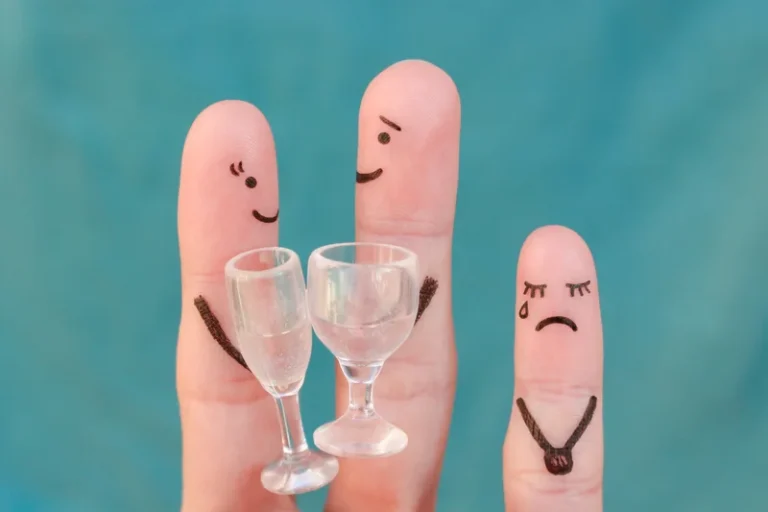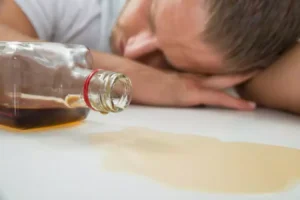
I know that your group has done many animal studies, as you pointed out, and one of the postulated theories was the effect on the GABA neurotransmission pathway. Basically, we need to wait for results in the next years to come from randomized clinical trials to better unfold the question about doses. One ongoing question in the field is to try to identify the phenotypes or the subgroup of people who may be more responsive to these medications.
Treatment Options for Alcoholism
This means they can be especially helpful to individuals at risk for relapse to drinking. Combined with medications and behavioral treatment provided by health care professionals, mutual-support groups can offer a valuable https://ecosoberhouse.com/ added layer of support. Unlike AUD, binge drinking isn’t considered a mental health condition. Still, both patterns of drinking can lead to health concerns and affect your overall well-being and quality of life.
Impact on your health
- Becoming cognitively impaired from excessive drinking of alcohol can lead to risky behaviors that can result in injury or death of an affected person or of others.
- One size does not fit all and a treatment approach that may work for one person may not work for another.
- Treatment plans might include cognitive-behavioral therapy, medication to manage withdrawal symptoms, and support groups like Alcoholics Anonymous.
- Recovery and rehabilitation offer hope and the potential for reversing some of the damage caused by alcohol, but early intervention is key to preventing the most severe health consequences.
- Keep in mind that alcoholism or AUD cannot be determined by the quantity of alcohol being consumed but is a medical condition that is diagnosed based on the mental reliance that the person has on alcohol.
If you or a loved one show signs of overdose, contact your local emergency services immediately. Alcohol poisoning can get dangerous quickly, and it’s sometimes fatal. Our team of addiction medicine experts are compassionate and committed to making addiction treatment accessible, understandable, and affordable. Any number of symptoms is concerning and indicates treatment for alcohol use or abuse is necessary. Alcohol use disorder (AUD) is a chronic, relapsing disease that is diagnosed based on an individual meeting certain criteria outlined by the Diagnostic and Statistical Manual of Mental Disorders (DSM-5).

Risks of alcohol use disorder
- Other early signs of alcoholism include blackout drinking or a drastic change in demeanor while drinking, such as consistently becoming angry or violent.
- But there are subtle yet important distinctions between these two terms.
- Those with moderate to severe alcohol use disorders generally require outside help to stop drinking.
- For men, this low-risk range is defined as no more than 4 drinks on a given day and no more than 14 per week.
- Read on to learn more about the symptoms, risk factors, treatments, diagnosis, and where to get support.
- It’s a brain disorder that can be measured on a scale of mild, moderate or severe depending on the level and frequency of consumption and adverse effects.
With alcoholism, the most important component for alcohol treatment is usually time. A person may need varying levels of care with ‘step-down’ levels to foster long-term sobriety. A person with alcoholism may spend a lot of time thinking about drinking or how to hide their drinking. They may not feel comfortable at social events if alcohol is not available.
Medications also can help deter drinking during times when individuals may be at greater risk of a return to drinking (e.g., divorce, death of a family member). Behavioral treatments—also known as alcohol counseling, or talk therapy, and provided by licensed therapists—are aimed at changing drinking behavior. Examples of behavioral treatments are brief interventions and reinforcement approaches, treatments that build motivation and teach skills for coping and preventing a return to drinking, and mindfulness-based therapies. It was written based on peer-reviewed medical research, reviewed by medical and/or clinical experts, and provides objective information on the disease and treatment of addiction (substance use disorders). Continued alcohol abuse can lead to alcoholism, but alcoholism exhibits various other symptoms that are in addition to symptoms of alcohol abuse. Recognizing the early signs and risk factors for AUD can help you seek early treatment and intervention to break alcohol misuse patterns.


As a result, you might experience a blackout, vomit, or even pass out. This behavior pattern and excess consumption get to the point of negatively affecting work, family, and personal life. It is a pattern and habit of reckless and negligent drinking that continues even in the face of negative consequences. Someone who abuses alcohol often can stop drinking, on their own willpower, if given a good enough reason to do so, such as a health issue, or potential loss of a relationship. A person who abuses alcohol and continues to drink can, at some point, also progress to having alcoholism. Treatment options available for people struggling with alcohol abuse and alcoholism may vary depending on the needs of the patient and their preferences.
Where to get support?

Excess drinking can affect your physical and mental health in many different ways. You may have AUD if you continue to drink despite any physical, emotional, and social consequences you experience. Perhaps you even want to drink what is the difference between alcohol abuse and alcoholism less, or stop drinking entirely, but find yourself unable to quit. Our physician-led program helps people reclaim their lives with addiction treatment. Find out what you can do to help yourself or your loved one stop drinking.

